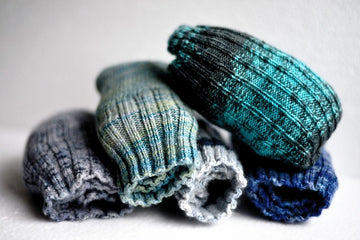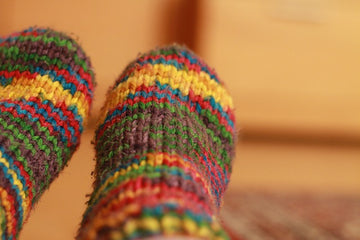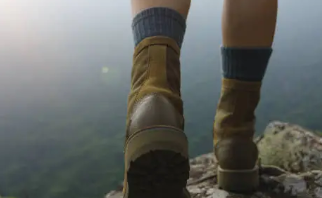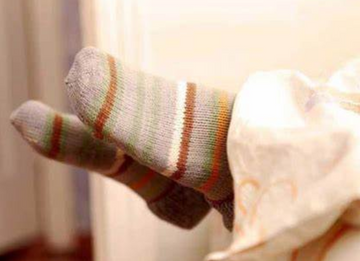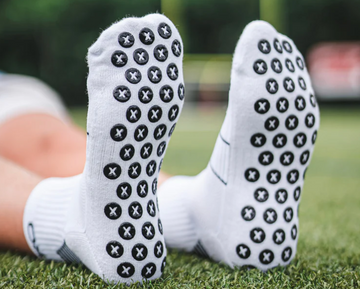
Have you ever slipped and fallen because your shoes lacked traction? If so, you're not alone. Fortunately, there's a solution: grip socks! These innovative socks offer superior grip on both the soles and the feet themselves, preventing slips and enhancing performance in various activities.
What are Grip Socks
Grip socks are socks designed to provide extra traction on both the bottom of the sock and the foot itself. They are typically made from a soft, breathable material with silicone or rubber treads on the soles and sometimes the heels and toes. These grippy materials help to prevent your feet from slipping inside your shoes or boots, and also from slipping on a smooth surface.
Grip socks are most commonly worn by athletes who participate in activities that require a lot of quick changes in direction, such as basketball, soccer, football, and Pilates. They can also be helpful for people who work in environments where there is a risk of slipping, such as hospitals, kitchens, and construction sites.
Why Do People Wear Grippy Socks?
To Prevent Falls and Slipping
This is the most common reason, especially in hospitals, nursing homes, and psychiatric facilities. Patients in these environments may be unsteady on their feet due to medication, illness, or mental health reasons. Grippy socks, also known as hospital socks or psych ward socks, have rubberized treads on the soles to prevent slips and falls which can be serious and lead to injuries.
For Activities and Enhanced Performance
Athletes and people who participate in activities like Pilates or yoga wear grippy socks for improved traction and stability. These socks help prevent their feet from slipping inside their shoes or on the floor, which can be crucial for quick movements and good performance.
In addition to preventing slips and falls, grip socks can also provide other benefits, such as:
- Improved comfort
Grip socks can help to reduce friction between your foot and your shoe, which can help to prevent blisters.
- Enhanced performance
By preventing your foot from slipping inside your shoe, grip socks can help you to feel more stable and in control, which can improve your performance in athletic activities.
- Reduced foot fatigue
Grip socks can help to reduce foot fatigue by absorbing sweat and keeping your feet dry.
What Is the Difference Between Grip Socks and Normal Socks?
In short, grip socks are specialized socks that prioritize preventing slipping and falls, while normal socks prioritize comfort and breathability for everyday wear.
Grip
Grip Socks: The defining feature of grip socks is the presence of grippy materials like silicone or rubber treads on the soles, sometimes extending to the heels and toes. These treads provide extra traction on both the bottom of the sock and the foot itself.
Normal Socks: Regular socks are made from materials like cotton, nylon, or wool, which prioritize comfort and breathability. They offer little to no grip on the bottom.
Purpose
Grip Socks: Designed for activities requiring good traction and stability, like sports (football, soccer, basketball), yoga, Pilates, or even in work environments with slippery floors (hospitals, kitchens).
Normal Socks: Made for everyday wear, offering comfort and breathability for various activities where grip isn't a major concern.
Other Features
Grip Socks: May be made from moisture-wicking materials to keep feet dry and reduce blisters. They often have a snugger fit to further prevent slipping inside shoes.
Normal Socks: Come in a wider variety of lengths, thicknesses, and styles for different needs and preferences.
Do Pros Actually Wear Grip Socks?
Professional athletes, especially footballers (soccer players), widely use grip socks. Studies suggest a large portion, possibly over 70%, of professional footballers wear grip socks.
Why Do Pro Soccer Players Wear Grip Socks?
Pro soccer players wear grip socks for several key reasons that directly impact their performance on the field:
- Enhanced Traction
This is the biggest advantage. The grippy soles of these socks prevent their feet from slipping inside their cleats. This creates a feeling of being "one with the boot," leading to better stability and control during quick changes of direction, cuts, and sharp turns.
- Improved Speed and Maneuverability
With less foot movement inside the cleat, a player can react faster and make quicker, more precise movements. This translates to better overall agility and speed on the field.
- Precision with the Ball
Reduced foot movement inside the boot allows for better control of the ball when dribbling, passing, and shooting. This can lead to more accurate passes and powerful strikes.
- Reduced Blisters
Grip socks can help minimize friction between the foot and the cleat, which can cause painful blisters during intense games.
Do Grip Socks Lose Grip?
Grip socks can lose grip over time, but several factors influence how long they stay effective.
Material: As you mentioned, the grippy material on the soles is usually rubber, which offers good initial traction. Some manufacturers might use silicone as well.
Washing and Care: Following proper care instructions is crucial. Typically, washing inside out, using gentle detergent, and air drying can help extend the life of the grippy material. Harsh detergents and high heat from dryers can break down the rubber or silicone, reducing grip.
Frequency of Use: The more you wear the socks, the more wear and tear the grippy material experiences. This can lead to a gradual decrease in grip over time.
What Percentage of Footballers Wear Grip Socks?
The study suggests that a whopping 72% of players who started games in the Premier League on a specific date (February 4th, 2024) were wearing grip socks. This indicates that grip socks have become quite popular among professional footballers.
When Did Grip Socks Become Popular?
The credit for introducing grip socks goes to Trusox, who became the first company to produce them in 2011. While they may have existed in niche markets before, Trusox's entry likely marked a significant step towards wider adoption.
A major turning point came in 2012 when Gareth Bale, a famous footballer, started wearing Trusox. His success and high profile brought significant attention to grip socks and their potential benefits for athletes.
Following these events, grip socks' popularity continued to grow steadily, particularly among athletes, due to the performance advantages they offer.
How Long Does Grip Socks Last?
With regular use, a good pair of grip socks can last anywhere from 6 months to a year. By following proper care routines and rotating multiple pairs of grip socks, you can potentially extend their usability beyond a year.
Final Words
Grip socks are a versatile footwear option, providing benefits for athletes, healthcare professionals, and anyone seeking extra stability. From preventing falls to improving athletic performance, grip socks offer a unique combination of safety and functionality. Whether you're a professional athlete or simply navigating everyday life, grip socks can provide the extra traction you need to move with confidence.
Read More:
Why Do We Wear Socks
Do You Wear Socks with Climbing Shoes
What Color Socks with Brown Shoes
What Socks to Wear with Loafers
What are Grip Socks




